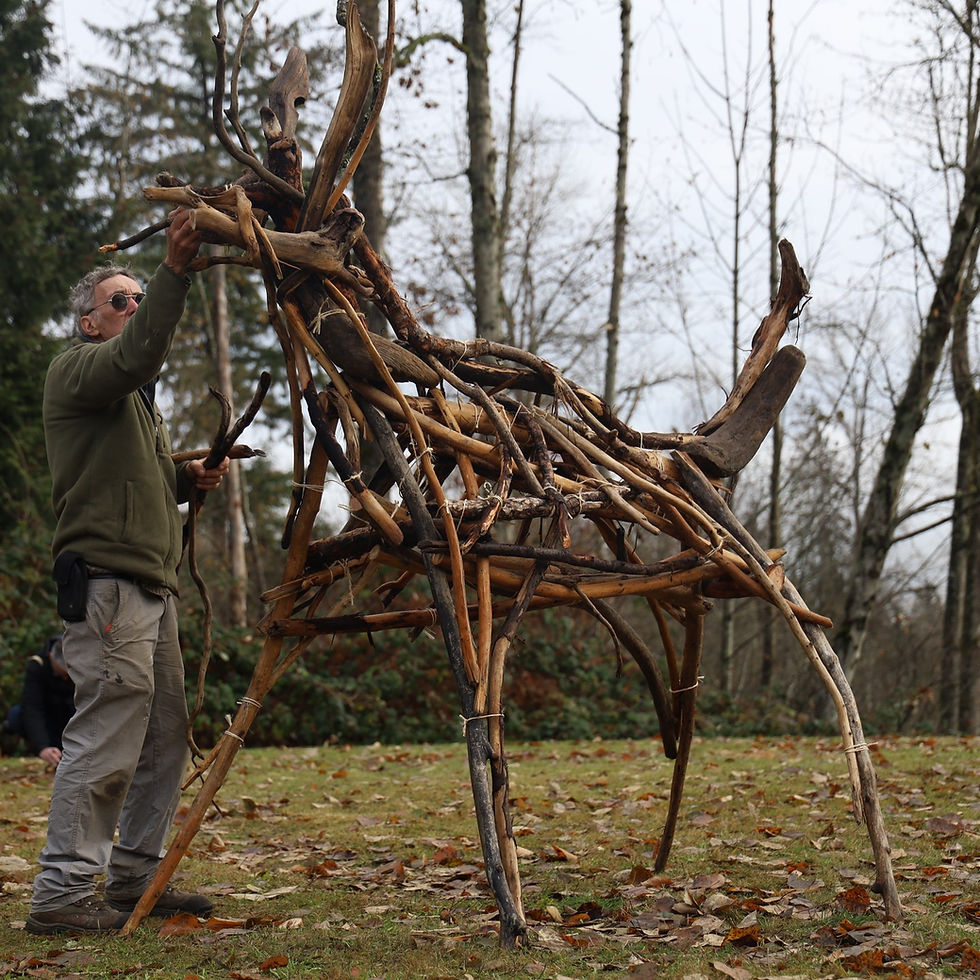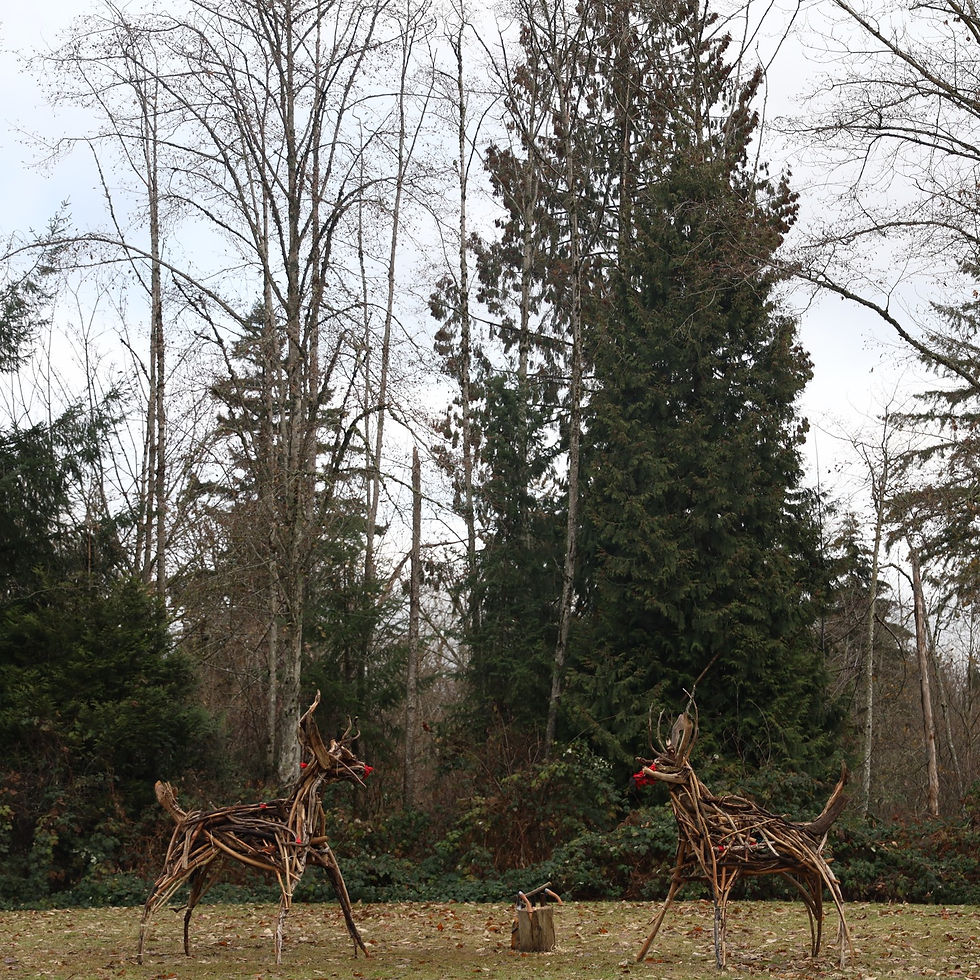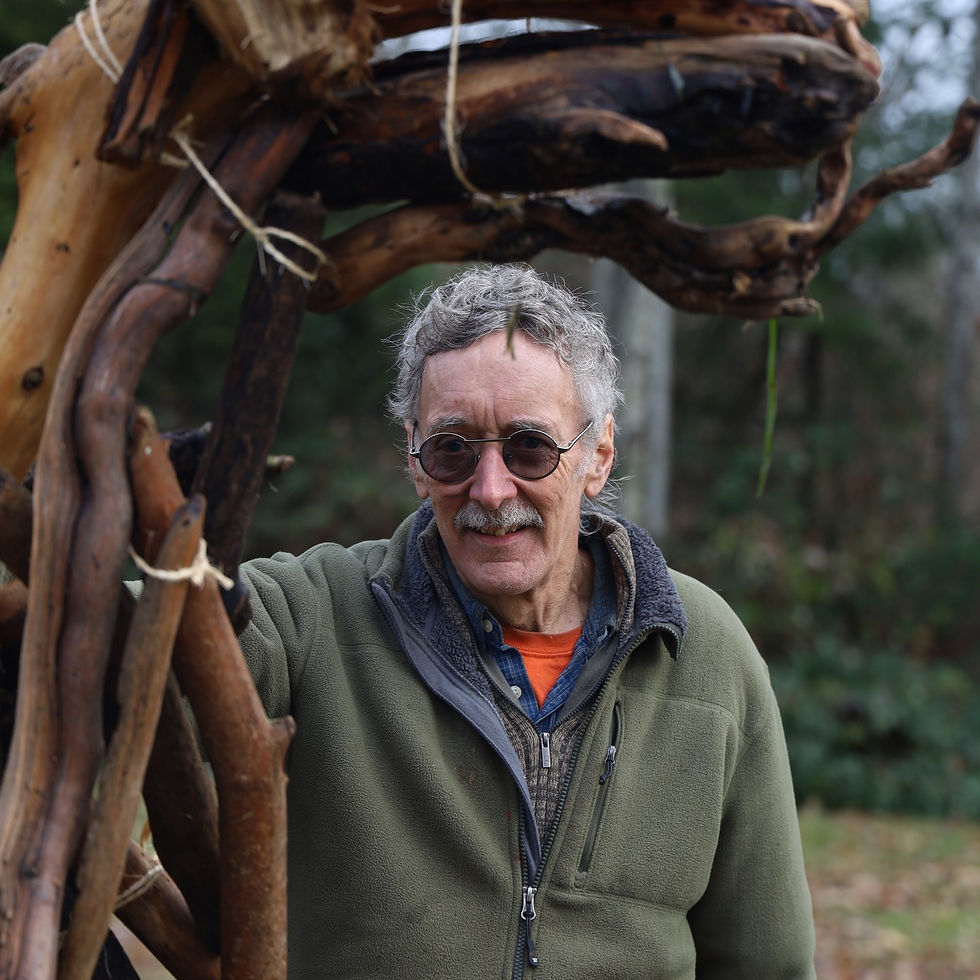Author: Christianna Thomas Photographer: Justin Yu Editor: Isabella Wen
Past Work
George Rammell is a sculptor and teaches at Emily Carr University. He has worked with Canadian and half-Haida artist Bill Reid on many projects, like The Chief of the Undersea. He has become an activist for indigenous nations specifically impacted by the Trans Mountain Pipeline, or TMX pipeline. In the 1980s, Rammell made a marble sculpture called "Black Wand" when he was teaching in Anchorage, Alaska. He and his Aleut students were located near a nuclear missile base, which was a juxtaposition between technology, violence, and the traditional stone being used. This means that traditional art and marble were ironically being used next to a site of development and war. These principles contrast, yet they occupy the same space.
The sculpture was supposed to rock, but now it's stationary, "like a displayed club or sorcerer's wand, concealing its potential", according to Rammell. Then, when he worked with Reid, he used plaster as the material. This is because it can uniquely let the artist add to the sculpture if they want to change something.
The art was inspired by Haida sculptures that Reid wanted to recreate to connect with his Haida roots. Recently, Rammell has started making art to protest institutions. One example is when he protested the cutting of the studio arts program he taught by making a sculpture of Capilano University’s president. The sculpture displays the president with her poodle as a ventriloquist doll wrapped in an American flag. Interestingly enough, the removal was later deemed to violate the University Act because Capilano’s Senate wasn’t consulted. As he transitioned to art based on indigenous activism, he made things like, "Chambers of Predetermined Outcomes: Gatekeepers of Justice ''. This wasn't just a sculpture. It facilitated a puppet show that demonstrated how the court ignores Indigenous law. They had fake police, real hecklers, etc., yet the message was clear. The courts don’t care about tribal relations to land or even the health of the tribe affected by pollution. .
Wooden elk

Sculpture of an elk made of wooden branches | Photo: Justin Yu
The long, thin legs of the elk show that it is prominent yet not very mobile. It is seen by others but can’t change its situation. The bare wood is used to show the elk has been beaten down and holds a pretense of defense it can’t fulfill. Even though we think it has a strong persona, it has little support. In the same way, many see the First Nations peoples, like the Squamish and Tsleil-Waututh nations, as savages. Settlers fear First Nation peoples, but these peoples have been put in a position of vulnerability. This is due to the ravaging of their reserves, which are just scraps of what is owed. The use of strings to keep the piece together amplifies Rammell’s message of vulnerability and fragility.

Two wooden elk sculptures facing one another | Photo: Justin Yu
Moreover, in the past, elk were hunted nearly to extinction. Until now, because of the elk’s reintroduction into the Tsleil-Waututh's woods, the Tsleil-Waututh people could only hunt the elk in moderation. The Tsleil-Waututh people, who live on the reserve being ravaged by the TMX pipeline, hunt elk as a communal practice. As the elk are returning, tribe members are reconnecting with the land and their culture via elk hunting. According to CBC.CA, who is doing a series on aboriginal youth, "Elk are designated each year by the band* as "community elk," meaning that some, including the first elk shot in 2012, are hunted for community gatherings and delivered to elders." This means elk are supposed to represent a community and connect the young, who hunt, and the elders, who receive the elk. The destruction of the animals' habitats via the pipeline dwindles the traditions that are finally being brought back. Rammell likely wanted to convey the loss of community and tradition. Conversely, his piece displays that community is so much more than just traditions. Settlers do not recognize animals, nature, or community for what they are or their interdependence. They help enforce nationhood, create systems of care via kinship, and are the life force of the culture.

Rammel with wooden elk | Photo: Justin Yu
Implications for indigenous people
The TMX pipeline and the spotted owl’s habitat are in the same area, according to Geoff Senichenko, coordinator for the Wilderness Committee. This means that the spotted owl, which only has three left in the wild, will not have a home. The pipeline builders said they would reverse the damage by donating 5,000 dollars to feed the owl, which doesn't do anything if the owls don’t have a home to receive the food in!
Additionally, 76 killer whales remain in its southern population, and an increase in tanks is associated with the pipeline, along with oil spills. These conditions put the already endangered animals at greater risk of extinction. Moreover, a report by the Canadian National Energy Board agrees that adverse impacts on whales will greatly increase due to the pipeline. On top of that, the CO2 emissions due to extraction from Alberta and burning oil will impact water and air quality for First Nations people nearby.
All of this is to say that Rammell uses his artwork to bring attention to issues caused by theTMX pipeline. Also, the use of an elk in combination with that form of vulnerability is how the pipeline forces nature and tribes to be broken and laid bare. The pipeline disrespects the connection to the land. It disrespects the sustenance of the tribes, animals, and vegetation. The removal of their habits means tribes don't have food and also ignores the care First Nations have for the nature that provides for them.
Why?
Rammell said that he protested and was arrested because he saw the injustice of the TMX pipeline. He saw his actions as necessary to pause expansion until legal action could be taken. Rammell was inspired by Bill Reid, a modernist Haida artist with whom he worked on the TMX pipeline. He saw Reid’s art and the protests against the cutting of trees on Lyell Island. This forced him to realize he wasn't allowed to sit idly.
Rammell has Tsleil-Waututh students in some of his classes and understands how hard they are working to restore their water. He also understood that their work was being undone by the pipeline excavation and oil spills due to it. The Tsleil-Waututh students’ relationship to land was based on survival, both culturally and physically. He couldn’t let their land and homes be wasted due to a spill. Therefore, he protested via sculptures and his body at Burnaby, standing in refusal, and understood that none of that removed the way his existence on the land dispossesses native land every day.
Overall, Rammell has impacted the indigenous communities in BC, Canada, through his art and activism. His big statements, like his sculpture making fun of Canada's Supreme Court, go viral and reach audiences that don’t normally get to learn about things like indigenous land rights. Rammell’s work is inspired by Reid and his students' struggles against the disruption of indigenous life and land. He makes art and speaks with an understanding of his static settler identity but works within that framing to sustain the work tribe members are already doing.
Band: According to the Canadian Encyclopedia, "Band is a term the Canadian government uses to refer to certain First Nations communities. Band governments are managed by elected councils according to the laws of the Indian Act. Today, some bands prefer to call themselves First Nations. As of 2020, the Government of Canada recognized 619 First Nations in Canada."

